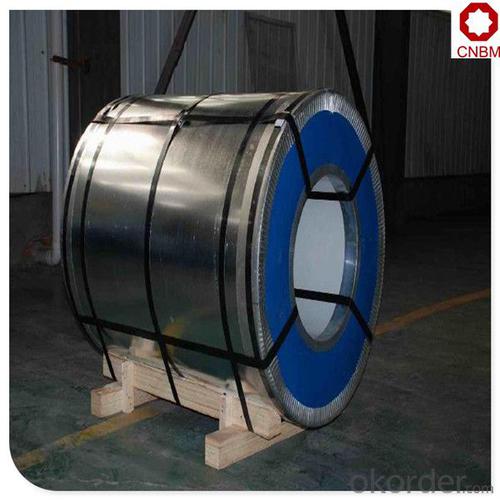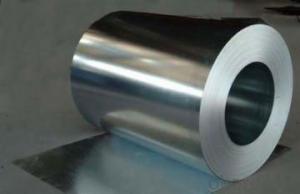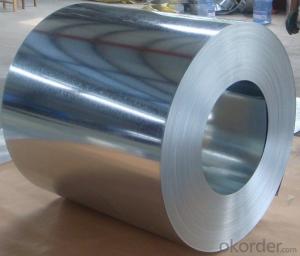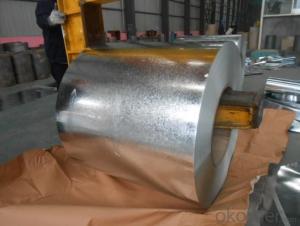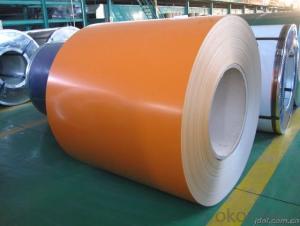Galvanized prime hot rolled steel sheet in coil S220GD+Z
- Loading Port:
- China main port
- Payment Terms:
- TT OR LC
- Min Order Qty:
- 25 m.t.
- Supply Capability:
- 34568 m.t./month
OKorder Service Pledge
OKorder Financial Service
You Might Also Like
Specification
Hot-dip galvanized steel coils are available with a pure zinc coating through the hot-dip galvanizing process. It offers the economy, strength and formability of steel combined with the corrosion resistance of zinc. The hot-dip process is the process by which steel gets coated in layers of zinc to protect against rust. It is especially useful for countless outdoor and industrial applications. Production of cold formed corrugated sheets and profiles for roofing, cladding, decking, tiles, sandwich walls, rainwater protective systems, air conditioning duct as well as electrical appliances and engineering.
Standard and Grade :
Hot-dip galvanized steel coils | ||||
ASTM A653M-06a | EN10327:2004/ 10326:2004 | JISG 3302-2010 | AS-NZS 4534-2006 | |
Commercial quality | CS | DX51D+Z | SGCC | G1+Z |
Structure steel | SS GRADE 230 | S220GD+Z | SGC340 | G250+Z |
SS GRADE 255 | S250GD+Z | SGC400 | G330+Z | |
SS GRADE 275 | S280GD+Z | SGC440 | G350+Z | |
SS GRADE 340 | S320GD+Z | SGC490 | G450+Z | |
SS GRADE550 | S350GD+Z | SGC570 | G550+Z | |
S550GD+Z | G550+Z | |||
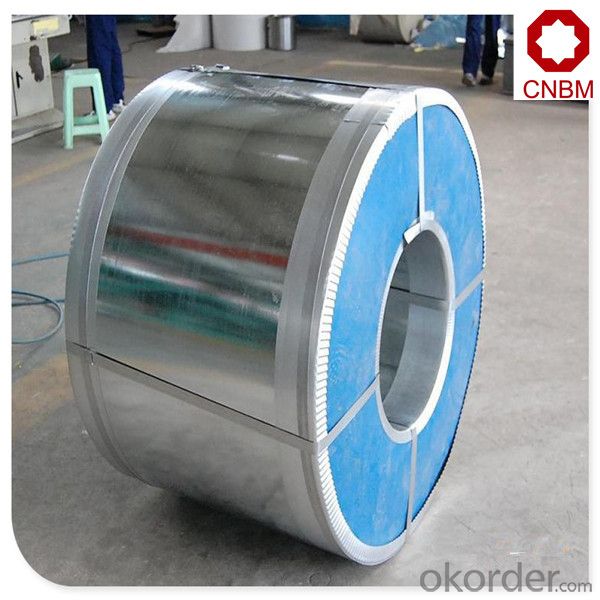
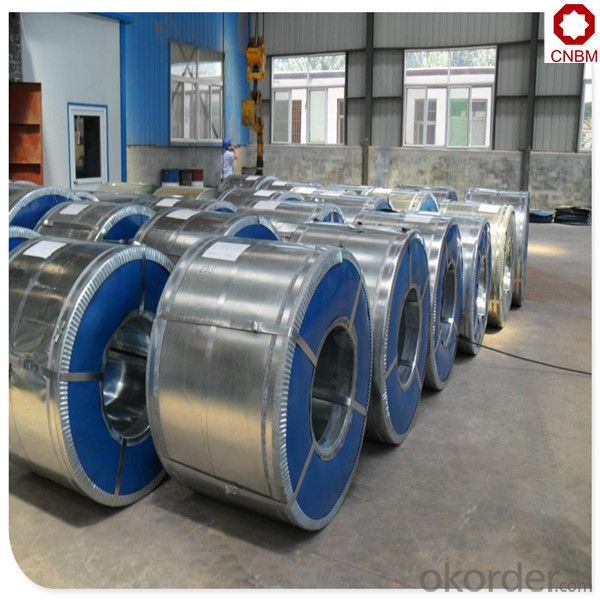
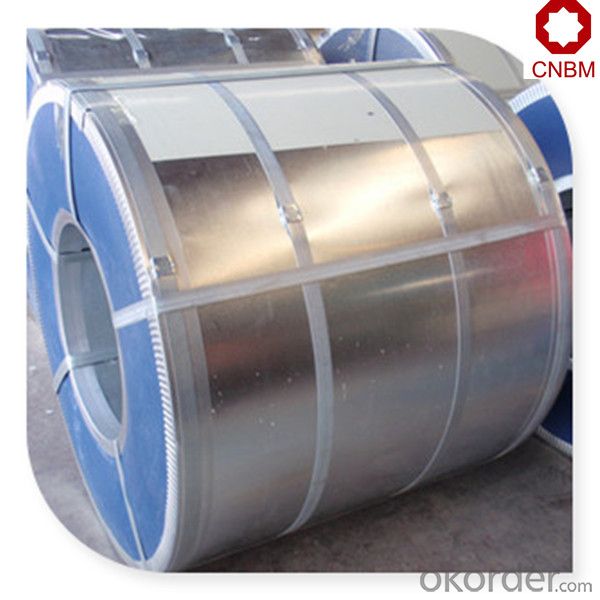
FAQ
Q: How do you guarantee the quality of your product?
A: Every process will be checked by responsible QC which insures every product's quality.
Q: How much is your delivery time?
A: Normally within 30 days of receipt of LC original or prepayment, but mostly according to the specific requirements or the quantity
Q: I need sample, could you support?
A: We can supply you with the sample for free, but the delivery charges will be covered by our customers. For avoiding the misunderstanding, it is appreciated if you can provide the International Express Account for Freight Collect. Also you can have a visit to us, welcome to CNBM!
Certificate:
CNBM International is highly recognized by its business partners and clients all over the world and has obtained rapid development under the spirit of win-win. We will carry on the mutual beneficial, innovative and revolutionary trading structure as we did before, create value for our employees, share holders and clients and benefit the whole society in our future development

- Q: a concrete or steel building?also, what is the density of concrete and steel? is concrete heavier in steel for the same volume?
- minorchord2000 an engineer using a non-metric measuring system - it's priceless
- Q: Can solution annealing be done on carbon and low alloy steels. please give an explanatory answer.
- No. Carbon steel has two different crystal structures, FCC and BCC , depending on the temperature. when you heat steel up and then quench it, it locks the crystal structure into the BCC form. this makes it hard. whereas precipitation hardened austentic stainlesses remain BCC regardless of the temp, so the hardness change is not a function of thermally induced strain. you can anneal carbon steel but the thermal profile is closer to the precipitation profile of PH stainlesses than it is to the Solution annealing profile.
- Q: What are the different coil handling equipment options available for steel coils?
- There are several options available for handling steel coils, including coil cars, coil upenders, coil lifters, coil tilters, and coil transfer carts. These equipment options are designed to safely and efficiently transport, position, and manipulate steel coils during various stages of the manufacturing process.
- Q: How are steel coils used in the production of prefabricated buildings?
- Steel coils are used in the production of prefabricated buildings as they serve as a primary material for manufacturing structural components such as beams, columns, and frames. These coils are unrolled and shaped into various sections, which are then welded or bolted together to form the skeleton of the building. Their strength, durability, and malleability make steel coils an ideal choice for constructing robust and reliable prefabricated structures.
- Q: What are the benefits of using stainless steel coils?
- There are several benefits to using stainless steel coils in various applications. Firstly, stainless steel coils are known for their exceptional strength and durability. This makes them highly resistant to corrosion, rust, and stains. As a result, stainless steel coils can withstand harsh environmental conditions and are suitable for both indoor and outdoor use. This longevity ensures that the coils will last for a long time, reducing the need for frequent replacements and saving costs in the long run. Additionally, stainless steel coils offer excellent heat resistance. They can withstand high temperatures without warping or losing their structural integrity. This makes stainless steel coils ideal for use in applications that involve extreme heat or thermal cycling, such as in industrial furnaces or heating systems. Another advantage of using stainless steel coils is their versatility. Stainless steel is a highly adaptable material that can be easily formed into various shapes and sizes. This allows for customization and flexibility in design, making it suitable for a wide range of applications in different industries. Whether it is used in construction, automotive, aerospace, or even household appliances, stainless steel coils can be tailored to meet specific requirements. In addition to their physical properties, stainless steel coils are also favored for their hygienic properties. Stainless steel is non-porous, which means it is resistant to bacteria, mold, and other contaminants. This makes it an excellent choice for applications that require strict cleanliness and hygiene standards, such as in the food and beverage industry or medical equipment. Lastly, stainless steel coils are also environmentally friendly. They are fully recyclable, meaning they can be melted down and reused to create new products. This helps to reduce waste and conserve resources, making stainless steel coils a sustainable choice for many industries. Overall, the benefits of using stainless steel coils include their strength, durability, heat resistance, versatility, hygiene, and environmental friendliness. These qualities make stainless steel coils a reliable and cost-effective solution for a wide range of applications.
- Q: I was wondering because i just watched an episode of build it bigger on the discovery channel about the uss George bush, and when they were discribing it they said it was 500 tons of steel and 47,000 tons of aluminum. this kinda struck me as odd because i thought that it was mostly made of steel. and i would think that even if it was mostly aluminum, that the hull would be steel. and i think the hull would weigh more than 500 tons.
- An aircraft carrier is a pretty large hunk of metal. And it's mostly steel... at least its structure and weight bearing surfaces. As I recall, there was quite a bit of aluminum and other light stuff used for cosmetic stuff, like covering on interior bulkheads (walls). But the flight deck is about three football fields of steel... thick steel. Planes landing on an aircraft carrier don't land. They are trapped when their tail hook grabs an arresting cable, and kind of fall out of the sky. When they hit, they need something pretty substantial to break the fall. A carrier displaces an awful lot of water, but, and this is a guess, probably less than 100,000 tons... the one I was on displaced less than 80,000 tons. About 40 feet of it is underwater. Most of its crew live below or very close to the waterline. But there's enough above water to allow for the city that the carrier contains to operate pretty much like any city with a population of about 6,000. It has stores where you can buy almost anything, barbers, a hospital, dentists, doctors, fitness center, theaters, fast food places where you can have a hamburger made to order, restaurants where the food is free, a post office, gas stations, a radio studio and a television studio, newspaper, churches--a chapel as well as other places people can meet to hold religious services, even an airport. I looked at the ship's website. From what little information there is, it looks to be just a few feet larger than the old carrier I was on. If it weighs 500 tons, it has to displace 500 tons. Don't ask me how they do it... unless it was materials used during construction and removed.
- Q: How are steel coils processed and shaped into different products?
- Steel coils are processed and shaped into different products through a series of manufacturing techniques. First, the coils are uncoiled and straightened to remove any deformities. Then, they go through processes like cutting, slitting, or shearing to achieve the desired width and length. Next, the steel is shaped using techniques like rolling, bending, or stamping to create specific profiles, such as sheets, plates, or tubes. Additionally, various heat treatments and surface finishes can be applied to enhance the strength, durability, and appearance of the steel products. Overall, a combination of mechanical, thermal, and chemical processes is employed to transform steel coils into the wide range of products we see in industries like construction, automotive, and manufacturing.
- Q: I play the guitar and recently found a new type of a guitar called the steel guitar, I don't want to play it or anything it's just I've never seen anything like it before and wonder what the function of it is and what are the differences to a classical guitar
- Different okorder /. If you just like the sound, take a serious look into slide guitar, not the same, but seriously tasty.
- Q: How are steel coils used in the manufacturing of industrial valves?
- Steel coils are used in the manufacturing of industrial valves as they provide the necessary material for constructing the valve bodies and other components. The steel coils are processed and shaped into the desired form, ensuring the valves are durable and can withstand high pressure and temperature conditions.
- Q: How do steel coils contribute to the manufacturing of electrical appliances?
- Steel coils are essential components in the manufacturing of electrical appliances as they are used to create the core of transformers and electromagnets. These coils, made from steel, provide the necessary magnetic field required for the functioning of electrical appliances such as refrigerators, televisions, and washing machines.
Send your message to us
Galvanized prime hot rolled steel sheet in coil S220GD+Z
- Loading Port:
- China main port
- Payment Terms:
- TT OR LC
- Min Order Qty:
- 25 m.t.
- Supply Capability:
- 34568 m.t./month
OKorder Service Pledge
OKorder Financial Service
Similar products
Hot products
Hot Searches
Related keywords


